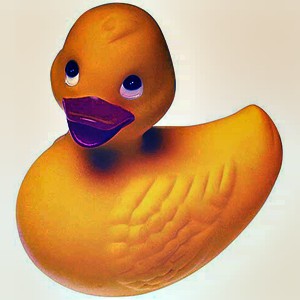TImageEnProc.WallisFilter
Declaration
procedure WallisFilter(WinWidth: Integer = 2; WinHeight: Integer = 2; Mean: Integer = 50; StDev: Integer = 50; InGain: Integer = 50; Edge: Integer = 10; Limit: Integer = 50; Thresholding: Boolean = False);Description
Apply a Wallis Filter to the image. The Wallis Filter is a locally adaptive image enhancement algorithm.| Parameter | Description |
|---|---|
| WinWidth/WinHeight | Dimensions of the window as a percentage of the image size (e.g. 2 is a window size 2% of the width/height) |
| Mean | Specifies the local mean. Range: 0-100. Typical value is 50 |
| StDev | Specifies the local standard deviation (contrast) of the output. Range: 0-100. Commonly used range: 50-75 |
| InGain | Controls the ratio of measured to desired local variance. Range: 0-infinity. If 0 there is no variance equalization |
| Edge | Controls amount of mean equalization. Range: 0-100. 100 is full mean equalization. 0 is measured mean restored |
| Limit | Specifies a limit for the correction |
| Thresholding | If true, pixels are set either white or black |
Note:
◼A UI for this is available to your users in the Image Processing dialog
◼If the image PixelFormat is not ie24RGB, it will be converted
Demo
 | Demos\ImageEditing\EveryMethod\EveryMethod.dpr |
Comparison of Auto-Enhancement Methods
// Load test imageImageEnView1.IO.LoadFromFile( 'D:\TestImage.jpg' );



// Apply a Wallis Filter to the image
ImageEnView1.Proc.WallisFilter();



// Improve the contrast and colors in the image
ImageEnView1.Proc.AutoImageEnhance1();



// Use a "Retinex" algorithm to simulate how humans see the world
ImageEnView1.Proc.AutoImageEnhance2();



// Enhance luminosity by applying a local adaptation tone mapping algorithm
ImageEnView1.Proc.AutoImageEnhance3();



See Also
◼AutoImageEnhance1◼AutoImageEnhance2
◼AutoImageEnhance3
Attribution
Wallis Filter is a locally adaptive image enhancement based on:Wallis, R. An approach to the space variant restoration and enhancement of images.
Proceedings, Symposium on Current Mathematical Problems in Image Science, Monterey CA, 1976 10-12 reprinted in C.O. Wilde E. Barrett, eds. Image Science Mathematics, Western Periodicals, North Hollywood, CA, 1977.
Summarised in Pratt:
Pratt, W.K. Digital Image Processing, 2nd. ed. John Wiley & Sons, New York, 1991, 248, 503
Programming for Delphi:
I. Scollar 2003
W A L L I S - STATISTICAL DIFFERENCING USING WALLIS ALGORITHM
PURPOSE:
IMPLEMENT THE STATISTICAL DIFFERENCING FILTER OF WALLIS (SEE
W. PRATT, DIGITAL IMAGE PROCESSING) FOR LARGE PICTURES
AND LARGE WINDOWS GREATER THAN 20X20
EFFICIENT SAMPLING TECHNIQUE TO COMPUTE LOCAL MEANS AND VARIANCES.
OPERATION:
THE WINDOW DIMENSIONS AND 5 PARAMETERS FOR THE WALLIS FORMULA:
MEAN DESIRED LOCAL MEAN OF OUTPUT A COMMONLY USED VALUE FOR MANY APPLICATIONS IS 128.ALLOWED RANGE 0-255.
S.D. DESIRED LOCAL STANDARD DEVIATION (CONTRAST) OF OUTPUT PICTURE. ALLOWED RANGE 0-100. COMMONLY USED RANGE 50-75.
GAIN CONTROLS RATIO OF MEASURED TO DESIRED LOCAL VARIANCE. ALLOWED RANGE 0-INFINITY
EFFECT:
0 NO VARIANCE EQUALIZATION
THIS IS THE SAME AS LEE'S ALGORITHM (IEEE PROC. PRIP 1978,P.56)
INF MAXIMUM VARIANCE EQUALIZATION
THIS IS EQUIVALENT TO WATKIN'S ALGORITHM.
COMMONLY USED RANGE 4-25.
EDGE FACT. CONTROLS AMOUNT OF MEAN EQUALIZATION
ALLOWED RANGE 0-1.
EFFECT:
100 FULL MEAN EQUALIZATION
0 MEASURED MEAN RESTORED
AUTHORS:
B. WEIDNER, RLMB, 1979
BASED ON IDEAS TAKEN FROM MVEQN/F BY I. SCOLLAR 1979
BASED ON IDEAS TAKEN FROM ANAY14 BY G. TANG, 1977